IU adjusts with test-on-arrival approach to fit COVID-19 testing landscape, Monroe County positive cases continue to rise
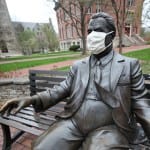
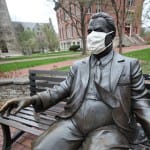
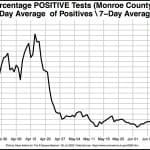
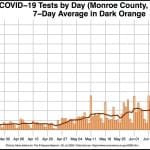
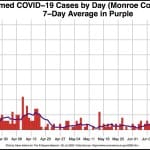
Indiana University still wants all students to be tested for COVID-19 before they start classes in the fall.
The expectation of universal testing was part an update sent to Indiana University faculty and staff on Friday (July 24). It matched the message from the university’s assistant vice president for strategic partnerships, Kirk White, at Friday’s weekly press conference of community leaders.
The novel part of Friday’s announcement was the hybrid test-on-arrival approach that the university will take to getting all students tested.
Those students who are not tested within a 10-day window before arrival will now be tested after arrival. The testing program will be organized by the university itself.
White put it like this: “We’re doing quite challenging work to figure out the logistics to test all of our students as they come to campus.”
White said, “This is this a problem that is going to take a lot of logistics, but we’ve secured, we believe, a lot of the supplies that we’ll need to do this.” He added, “There’s still details being worked out. And people are working night and day to get that done.”
The university’s preparations for the return of thousands of students to campus comes as Monroe County continues to see positive COVID-19 cases rise, in a second surge.
The current 7-day rolling average of positive tests is around 18, which is almost twice as many as the single-day peak of 11, during the initial surge in mid-April. The positive test rate has risen to between 5 and 7 percent over the last five weeks, after staying between 1 and 2 percent for the five weeks before that.
Hospitalizations in the county continue to rise, according to Brian Shockney, president of IU Health’s south central region. Shockney called it an “alarming trend” at Friday’s press conference. But the county has not seen a COVID-19 death in over a month.
The university had previously announced that all students needed to be tested within a 10-day window before arriving in Bloomington. That directive for pre-arrival testing was subsequently modified to apply only to those students living in residence halls and Greek houses.
IU media relations director Chuck Carney confirmed to the Square Beacon that students living in residence halls and Greek houses are still supposed to get tested within a 10-day window of arrival on campus—even though the university will now be taking a test-on-arrival approach for other students.
According to White, the modifications to the university’s approach to COVID-19 testing were made because of the shortage of testing capacity throughout the country and in Indiana.
The kind of testing program the university is working to set up involves large mobile testing site capacity for different locations on the campus, according to White. Exactly how those locations are staffed, and what type of tests are done, depends on availability of testing supplies, White said. White sounded optimistic when he said, “We’re feeling pretty good about this, the amount of testing supplies we’re going to be able to get, to pull this off.”
White said that the test-on-arrival approach will give the university a way to determine if a student is infected, or if they’re positive for the COVID-19 antigen. “And this will help promote the overall safety of the community,” White said.
For students who test positive as the semester progresses, White said a quarantine and isolation facility will be staffed on campus. Students who are living in private apartments off-campus will be expected either to isolate themselves using their own bedrooms, White said.
The residence hall system normally has a capacity of around 10,000 students. But White said the census would be lighter this year, down around 7,000 year. In many cases, double rooms have been configured as singles in an effort to “de-densify the campus” as much as possible, White said.
Where will students be living who would normally have lived in residence halls? Some of them are signing leases off campus, White said, and some are taking classes online.
White reported “a few hundred cancellations” of residence halls contracts. The deadline for cancelling a contact has been extended until July 31, White said.
Even though there will be a lighter population in residence halls, White reported that the size of the freshman class is still holding pretty steady—between 7,800 to 8,000 students. That’s about what would normally be expected, he said.
White said that because students and parents are still making decisions, the university doesn’t yet have a solid handle on the exact number of students that will be on campus.




Comments ()